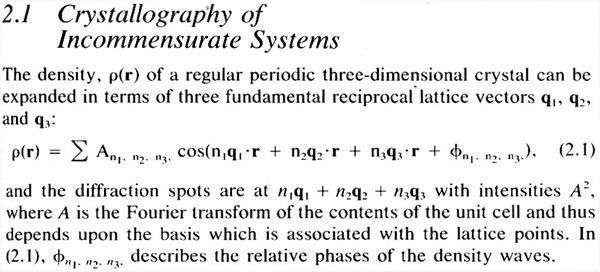
Introduction
From 1912 to the 1980s and 1990s, activities in x-ray diffraction and x-ray scattering mainly centered around the determination of crystal structures through, usually, single crystal techniques, and around the identification and quantitative analysis of unknowns, principally using powder diffraction techniques.
These are still important and challenging activities.
But, recently, x-ray diffraction techniques have increasingly been applied to even more difficult and complex areas. This is likely because of:
a. the need to solve new types of (non-routine) problems (e.g., disordered systems, interface structures, nano materials, quasiperiodicity)
b. the need to examine the structures new types of materials (e.g., incommensurate materials, polymers, quasicrystals)
c. the development of better instrumentation
d. the availability of highly intense sources (synchrotron & neutron spallation sources)
e. the availability of immense computing power
To understand how to apply x-ray diffraction to the investigation of these new areas (with, probably, many yet to come), need to examine the physics and mathematics of diffraction from basic, rather general standpoint. The development of Cowley will be followed in which Fourier series, Fourier transforms, and convolutions are employed.
Some examples:
The calculation of crystallite size and microstrain from
the breadths of diffraction peaks (this one is "old").
(see Warren - X-ray Diffraction)
The shape of a diffraction peak is deermined by
a. instrument source size and geometry
b. small crystallite size
c. non-homogeneous strain in the structure
Before the size/microstrain analysis, the instrumental contribution to the observed diffraction maxima must be removed by deconvolution. In the so-called Warren-Averbach method, the deconvolution of the observed maximum h(x)
h(x) = integral(g(z)f(x-z)dz)
is performed by applying the Stokes correction, which results in the representation of the size/strain broadened peak by a series of Fourier coefficients.

(see Introduction to Quasicrystals, Jaric, ed.)
The reciprocal lattice
Lattice in real space:
The wave equation
Describe wave motion by fcn ![]() for which
for which
= intensity
= wavelength
= frequency
= frequency
= magnitude of wave vector k

The wave equation
Repesent wave motion by a wave function